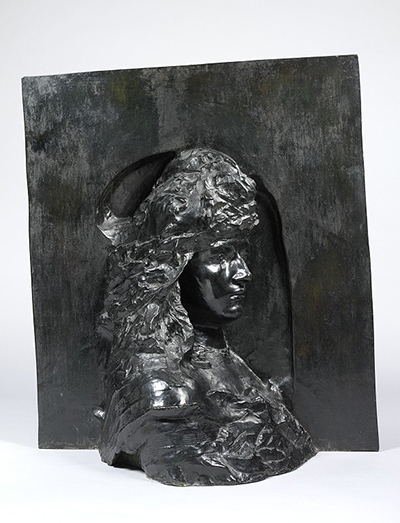This charming portrait sculpture has been renamed several times as the artist looked to adapt the piece to whoever he was meeting at the time. He patriotically named it La France after unveiling it at the V&A Museum in London, UK.
This sculpture is believed to have been one of the artist's last pieces, designed and completed just a few years before his passing. He would gift it to the V&A in 1914, and he passed in 1917. By that point he had already established himself as a highly influential sculpture who work was already in high demand. He generously gifted a good selection of work to the V&A after already giving anyway some items to French museums. Rodin wanted to leave behind a legacy that would be appreciated by future generations and was happy to give away much of his work to those institutions that he felt would best represent and preserve his work. The finest display of his work remains in the Musee Rodin, which is one of the best representations of a single artist anywhere in the world.
Over the course of several years this sculpture was known as St George, Byzantine Empress and Bust of a Young Warrior as the artist continued to change it's title, which was something he did to many of his artworks. He would rarely name anything until it was finished, so as to avoid being too restricted in how he was working. By this stage he was becoming internationally recognised and even Edward VII had visited his own studio a few years earlier. Rodin would in his later years write a series of instructions for how his collection would be handled after his death. He wanted most to be owned by the French state, and that it would be stored within a specialist museum in his name, just as remains the case today. It handles many thousands of items from his lifetime.
This portrait is actually believed to have been an adapted version of two different figures, being initially of Camille Claudel, before later taking in elements of Mariana Russell's features. Somehow, Rodin is able to make this work but it feels unusual to work in this way. The piece developed over time, with Rodin continually tweaking different parts of it, and initially it was much more faithful to the classical look of Claudel. It was common for the artist to amend sculptures over time, sometimes even then producing spin off items that provided alternatives. He could never find it easy to accept something as complete and was known to work tirelessly to achieve his idea of perfection. Visitors to the V&A Museum to see this piece will also be able to enjoy work from Michelangelo, Donatello and also Rodin's own The Age of Bronze.




